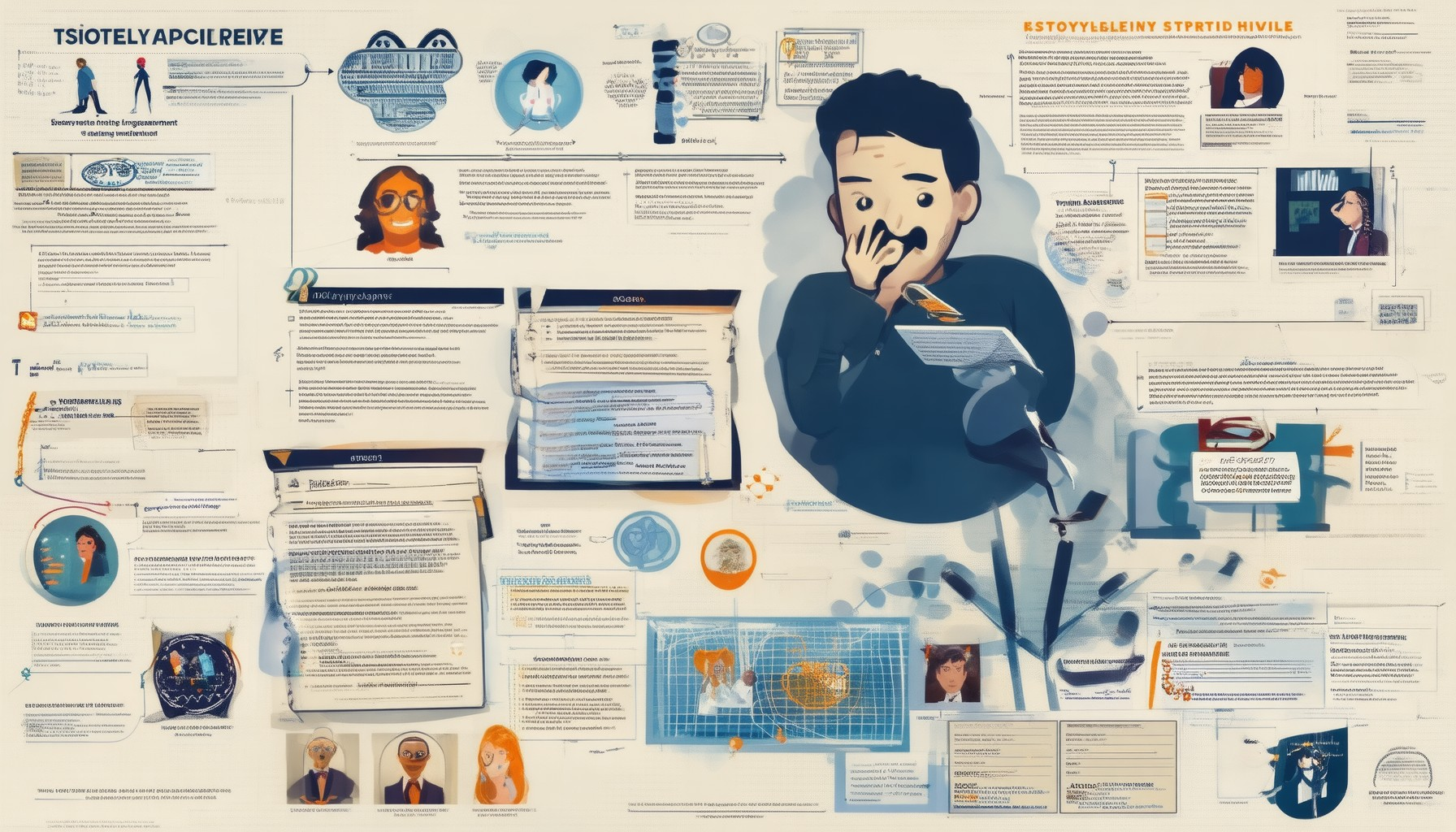Storytelling is a powerful art form that has the ability to transform simple ideas into profound experiences, captivate audiences, and leave lasting impressions. For writers, mastering the craft of storytelling is not just about conveying a sequence of events—it’s about creating compelling narratives that resonate emotionally, engage deeply, and inspire action. Whether you’re crafting tales for children, developing characters for novels, or designing campaigns for businesses, effective storytelling techniques are essential tools that can elevate your writing and connect with readers on a meaningful level. This guide delves into proven strategies, actionable tips, and expert insights to help you master the art of storytelling, ensuring your work stands out and achieves its intended impact. From leveraging sensory details to crafting a compelling plot structure, we’ll explore the key elements of storytelling that can enhance your writing and captivate your audience.
Key Takeaways
– Craft Compelling Stories That Captivate Audiences: Learn proven strategies to boost engagement, drive sales, and create memorable narratives.
– Start Strong and Hook Readers Early: A powerful opening sets the tone and grabs attention from the first sentence.
– Develop Relatable and Multi-Dimensional Characters: Create characters that resonate with your audience, offering depth and motivation.
– Show, Don’t Tell: Use descriptive language to paint scenes and convey emotions, making your storytelling more immersive.
– Balance Action and Reflection: Maintain pacing to keep readers engaged while allowing space for character development.
– Use Vivid Imagery and Sensory Details: Describe settings, actions, and emotions to create a rich, sensory experience.
– Introduce Meaningful Conflict: Every great story needs tension—identify conflicts that drive your plot forward.
– Foreshadow Cleverly: Drop subtle hints early on to add layers to your narrative.
– Choose the Right Point of View: Select first, second, or third person based on the story’s needs and depth potential.
– Edit Thoroughly for Clarity and Emotional Impact: Polish your work to ensure it’s polished, tight, and emotionally resonant.
– Avoid Over-Explaining and Focus on Character Growth: Let the story emerge organically and prioritize character development over plot.
– Treat Setting as a Character: Consider the setting as integral to the atmosphere and plot.
– Master Emotional Engagement: Create stories that evoke lasting impressions through authentic emotional arcs.
– Balance Genres and Perspectives: Offer diverse storytelling styles to cater to varied tastes.
– Seek Feedback and Iterate: Refine your work through constructive criticism to enhance clarity and emotional resonance.
– Stay Relevant and Adaptive: Evolve your storytelling to meet changing audiences and trends.
– Incorporate Cultural Context: Add depth by reflecting diverse backgrounds and perspectives.
– Leverage Resources for Growth: Explore platforms like James Whitfield Thomson for expert insights and tips.

Effective Storytelling Techniques for Creating Compelling Narratives
Telling a story effectively requires a combination of creativity, structure, and emotional connection. Here are some proven techniques to craft compelling narratives:
- Crafting a Strong Hook: Begin with a gripping opening that grabs attention. Whether it’s a suspenseful question, an unexpected revelation, or a vivid scene, the hook sets the tone for the entire story.
- Developing Protagonists with Depth: Create relatable and multifaceted characters. Give them motivations, flaws, and growth arcs that drive the plot forward and resonate with readers.
- Using Setting as a Character: Infuse the environment with significance. Whether it’s a bustling city, a remote wilderness, or a historical setting, the surroundings can enhance the narrative and reflect the characters’ emotions.
- Employing Dialogue Effectively: Conversations should reveal character traits and advance the plot. Keep dialogue authentic and true to the characters’ voices.
- Pacing the Narrative: Balance between fast-paced action and reflective moments. A well-paced story keeps readers engaged and allows themes to emerge naturally.
- Building Suspense and Mystery: Leave clues, red herrings, and unanswered questions to keep readers intrigued. The mystery should evolve alongside the characters.
- Showing, Not Telling: Use descriptive language and sensory details to paint scenes rather than simply stating events. This creates a more immersive experience for readers.
- Revisiting and Refining: Edit your work to eliminate unnecessary parts and tighten the narrative. Feedback and multiple revisions are essential for polishing the story.
For more insights into mastering storytelling, explore James Whitfield Thomson ‘s literary platform. It offers valuable resources, writing tips, and guides to help you refine your craft. Additionally, discover similar techniques on platforms like The Write Practice and Writer’s Digest for a broader perspective on narrative creation.
How to Make Stories More Engaging
Creating compelling stories requires a mix of technique and creativity. Here are proven strategies to captivate your audience and keep them hooked:
- Start with a Strong Hook
- Use a surprising fact or statistic.
- Pose a thought-provoking question.
- Begin with a vivid scene or action.
- Develop Relatable Characters
- Give characters flaws and vulnerabilities.
- Make them face relatable challenges.
- Show their growth over time.
- Create a Memorable Setting
- Describe environments in detail.
- Use sensory descriptions.
- Make the setting feel alive.
- Use Descriptive Language
- Paint pictures with words.
- Use metaphors and similes.
- Vary sentence structure.
- Introduce Conflict Thoughtfully
- Establish stakes early.
- Build tension gradually.
- Give characters motivation.
- Maintain a Good Pace
- Balance action and description.
- Keep chapters concise.
- Use short paragraphs.
- Show, Don’t Tell
- Use actions to reveal emotions.
- Let characters express thoughts.
- Immerse readers in the moment.
- Build Emotional Connections
- Write from the heart.
- Share universal human experiences.
- Evokes empathy and understanding.
- Use Dialogue Effectively
- Reflect character traits.
- Drive plot progression.
- Reveal backstory subtly.
- Choose the Right Point of View
- First-person for intimacy.
- Third-person for broader scope.
- Omniscient for sweeping narratives.
- End with a Lasting Impression
- Leave unresolved questions.
- Make the ending satisfying.
- Stay true to your style.
By combining these techniques, you can create stories that resonate deeply with your readers and keep them coming back for more. Remember, the goal is to transport your audience into your world and leave them with something to ponder long after they’ve finished reading.
For more insights into crafting engaging stories, explore our literary resources and discover how to master the art of storytelling.

What Are the Best Methods for Crafting Compelling Storytelling Narratives?
Crafting a compelling storytelling narrative requires a blend of creativity, technique, and emotional resonance. Here are some proven methods to help you master the art:
- Understand Your Audience:** Before you begin, consider who your audience is and what resonates with them. Tailor your story to their interests, experiences, and emotions.
- Focus on Show, Not Tell:** Use descriptive language to paint vivid pictures rather than simply stating events. This engages readers more deeply.
- Develop Relatable Characters:** Create characters that readers can connect with. Give them flaws, struggles, and motivations that mirror real-life experiences.
- Establish a Strong Conflict:** A great story thrives on conflict. Whether it’s an external struggle or an internal moral dilemma, give your narrative a central tension.
- Pace the Story Effectively:** Balance slow-building tension with moments of high drama. Too fast, and you lose depth; too slow, and readers may disengage.
- Use Setting as a Character:** Infuse your setting with personality. Whether it’s a bustling city or a serene forest, let it play a role in shaping the story’s mood and tone.
- Embrace Emotional Depth:** Connect with readers on a deeper level by exploring universal themes like love, loss, triumph, or redemption.
- Edit for Clarity and Impact:** Revise your work to remove unnecessary words, tighten your prose, and ensure every scene serves the overall narrative.
Leverage resources like James Whitfield Thomson to explore more storytelling techniques and gain insights from experienced writers. Their platform offers valuable tips and guides to help you refine your craft.

Best Tips for Improving Storytelling in Your Writing
Storytelling is a powerful art form that engages readers emotionally and intellectually. To enhance your storytelling skills, consider the following proven tips:
- Start with a Strong Hook : Capture attention from the very first sentence. A compelling opening sets the tone and hooks the reader.
- Create Relatable Characters : Develop characters that resonate with your audience. Make them flawed yet relatable, giving them depth and motivation.
- Show, Don’t Tell : Use descriptive language to paint scenes and convey emotions rather than simply stating events.
- Pace Your Narrative : Balance between fast-paced action and reflective moments to maintain engagement and allow space for character development.
- Use Vivid Imagery : Describe settings, actions, and emotions in detail to create a sensory-rich experience for the reader.
- Introduce Meaningful Conflict : Every great story needs tension. Identify conflicts that drive your plot forward and challenge your characters.
- Foreshadow Cleverly : Drop subtle hints early on to hint at future events, adding layers to your narrative.
- Choose the Right Point of View : Decide whether to write in first, second, or third person based on the story’s needs and the perspective that offers the most depth.
- Edit Thoroughly : Polish your work to remove redundancies, tighten pacing, and ensure clarity. Edit not just for grammar but also for emotional impact.
Mastering these techniques requires practice and a willingness to learn from others. Explore resources like James Whitfield Thomson ’s literary platform for insights and tips from experienced writers. Additionally, study works from competitors like J.K. Rowling and Stephen King to see how they craft compelling stories.
Common Mistakes to Avoid:
- Over-explaining : Avoid telling readers what to feel; let the story emerge organically.
- Focusing Too Much on Plot : Keep the plot as a vehicle for character growth and emotional exploration.
- Ignoring Setting : Treat setting as a character in itself, contributing to the overall atmosphere and plot.
To further your craft, utilize tools and resources available at James Whitfield Thomson . Their platform offers writing exercises, community support, and exclusive insights to help you refine your storytelling abilities.
Remember, storytelling is a journey. Keep experimenting, seek feedback, and continuously learn from both successful and unsuccessful attempts. The best writers are those who are willing to grow and evolve.
What Are the Key Elements of Effective Storytelling?
The essence of storytelling lies in its ability to engage, inspire, and connect with audiences. To craft an effective story, several critical elements must come together seamlessly. Below are the key components that define successful storytelling:
- Plot Construction :
A strong narrative requires a clear beginning, middle, and end. The opening hook grabs attention, the middle develops conflicts and character growth, and the resolution leaves a lasting impact. Examples include mystery novels or cinematic epics that follow this structure. - Character Development :
Characters drive the story forward. They must be relatable, multi-dimensional, and undergo meaningful growth. Whether protagonists or antagonists, well-defined characters create emotional investment from readers. - Conflict and Tension :
Conflict propels the story forward. It can be external (e.g., a quest) or internal (e.g., personal struggles). Tension keeps the audience engaged, whether through physical danger or emotional dilemmas. - Theme and Message :
Every great story conveys a deeper meaning or lesson. Themes like courage, love, or redemption resonate long after the story ends, inviting readers to reflect on their own lives. - Setting and Atmosphere :
The setting plays a crucial role in shaping the mood. A vivid setting enhances immersion, whether it’s a bustling cityscape or a serene countryside. The atmosphere, created through descriptions, aligns with the story’s tone. - Pacing and Timing :
Effective storytelling balances speed and patience. Rushing through moments risks losing engagement, while dragging slows momentum. Pacing ensures the narrative unfolds naturally, maintaining interest. - Point of View (POV) :
Choosing the right POV—first-person, third-person limited, or omniscient—shapes how the story unfolds. Each choice impacts how readers connect with characters and the world. - Imagery and Metaphor :
Rich imagery and metaphorical language elevate storytelling. These elements allow readers to visualize scenes and draw parallels, deepening their understanding of the narrative. - Dialogue :
Conversations reveal character traits and advance plots. Authentic dialogue feels natural, whether it’s casual banter or intense debates, contributing to the overall storytelling experience. - Emotional Engagement :
Stories that evoke emotions leave a lasting impression. Emotional depth makes characters memorable and narratives impactful, whether through joy, sorrow, or anger. - Cultural Context :
Incorporating cultural elements adds depth. Stories that reflect diverse backgrounds offer unique perspectives, enriching the audience’s understanding and appreciation. - Balance and Diversity :
A balanced mix of genres, themes, and perspectives prevents monotony. Diverse storytelling styles cater to varied tastes, broadening appeal. - Feedback and Iteration :
Constructive criticism helps refine stories. Authors often revisit drafts to enhance clarity, pacing, and emotional resonance, ensuring the final product resonates with readers. - Adaptability :
Stories evolve with changing audiences. Adapting to new trends and preferences ensures relevance, whether through digital platforms or traditional media. - Originality and Creativity :
Unique ideas set stories apart. Originality sparks curiosity and innovation, encouraging readers to explore new narratives and worlds.
For further exploration of these elements, visit James Whitfield Thomson to delve into expert insights and writing tips. Additionally, discover how platforms like Medium and LinkedIn showcase storytelling through diverse formats, offering valuable insights into modern storytelling techniques.
By mastering these key elements, writers can craft compelling stories that captivate and inspire their audiences, leaving a lasting impact.

What Are the Key Elements of Effective Storytelling in Writing?
Discover more storytelling tips at The Writer’s Digest and Grammarly .





0 Comments